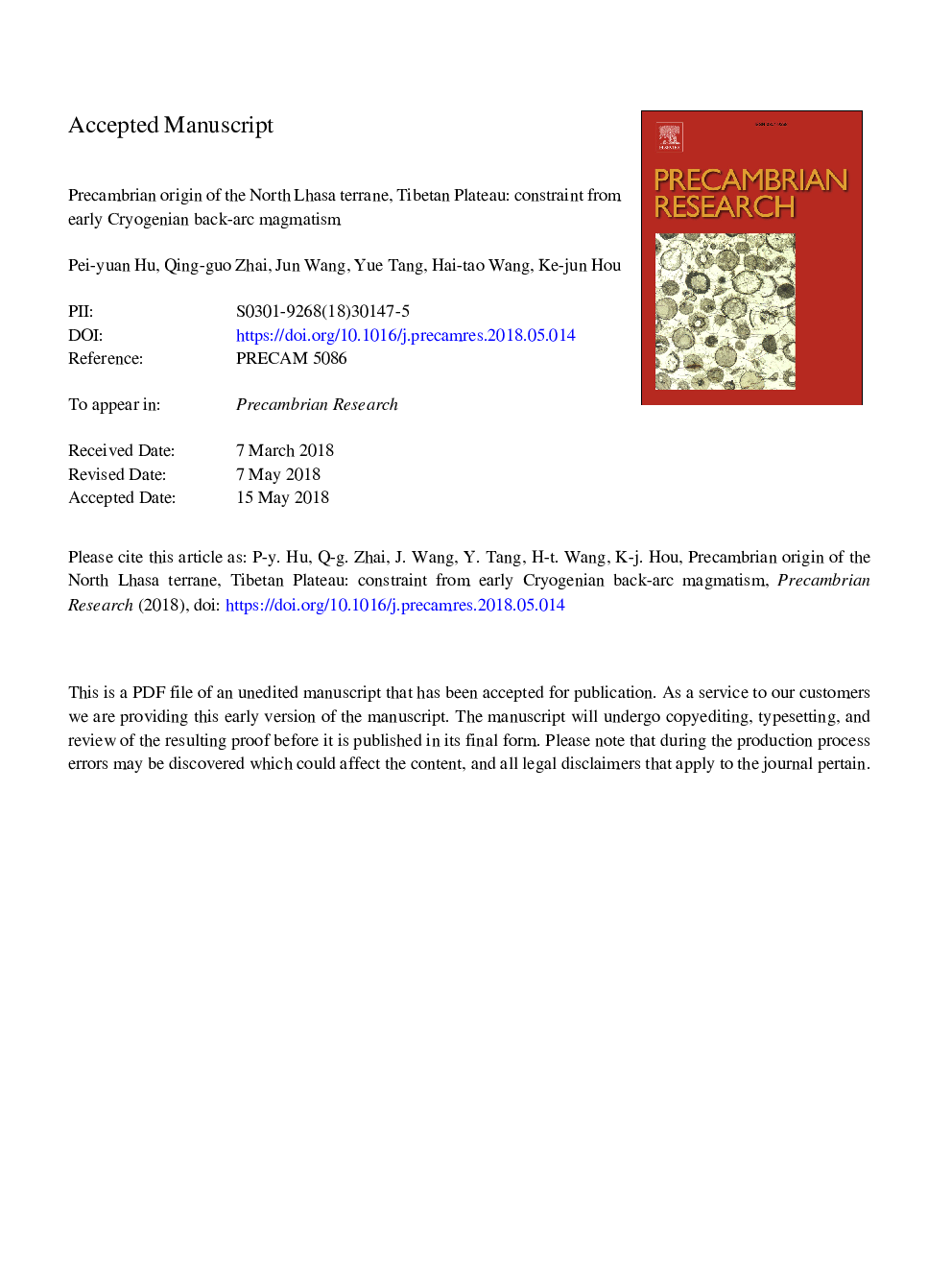| Article ID | Journal | Published Year | Pages | File Type |
|---|---|---|---|---|
| 8912524 | Precambrian Research | 2018 | 66 Pages |
Abstract
The origin of ancient continental blocks in the Tibetan plateau and their paleogeographic locations in the Rodinia supercontinent remain enigmatic. Here, we report the early Cryogenian metamorphic magmatic rocks (including amphibolites and granitic gneisses) from the North Lhasa terrane of the central Tibetan Plateau. The amphibolites (ca. 822â¯Ma) are tholeiitic and exhibit both MORB- (e.g., flat patterns of rare-earth and high field strength elements) and arc-like (e.g., elevated Th/Yb tatios) geochemical affinities. In combination with high positive zircon εHf(t) (+6.9 to +12.4) and whole-rock εNd(t) (+4.4 to +10.4) and low zircon δ18O (4.87 to 5.81â°) values, their geochemical data indicate a depleted mantle source affected by subduction components. The granitic gneisses (ca. 810 and 806â¯Ma) are A2-type granitoids and have relatively lower zircon εHf(t) (+4.7 to +6.9) and whole-rock εNd(t) (+3.5) and higher zircon δ18O (5.44-8.08â°) values. Their protoliths were probably generated by partial melting of Mesoproterozoic crustal rocks. The amphibolites and granitic gneisses are geochemically distinct from the Cryogenian rift-related magmatic rocks in the interior of the Rodinia supercontinent but similar to the coeval back-arc magmatic rocks at the northwestern edge of the Rodinia supercontinent, thus providing new constraints on the early Cryogenian paleogeographic location of the North Lhasa terrane.
Keywords
Related Topics
Physical Sciences and Engineering
Earth and Planetary Sciences
Geochemistry and Petrology
Authors
Pei-yuan Hu, Qing-guo Zhai, Jun Wang, Yue Tang, Hai-tao Wang, Ke-jun Hou,
